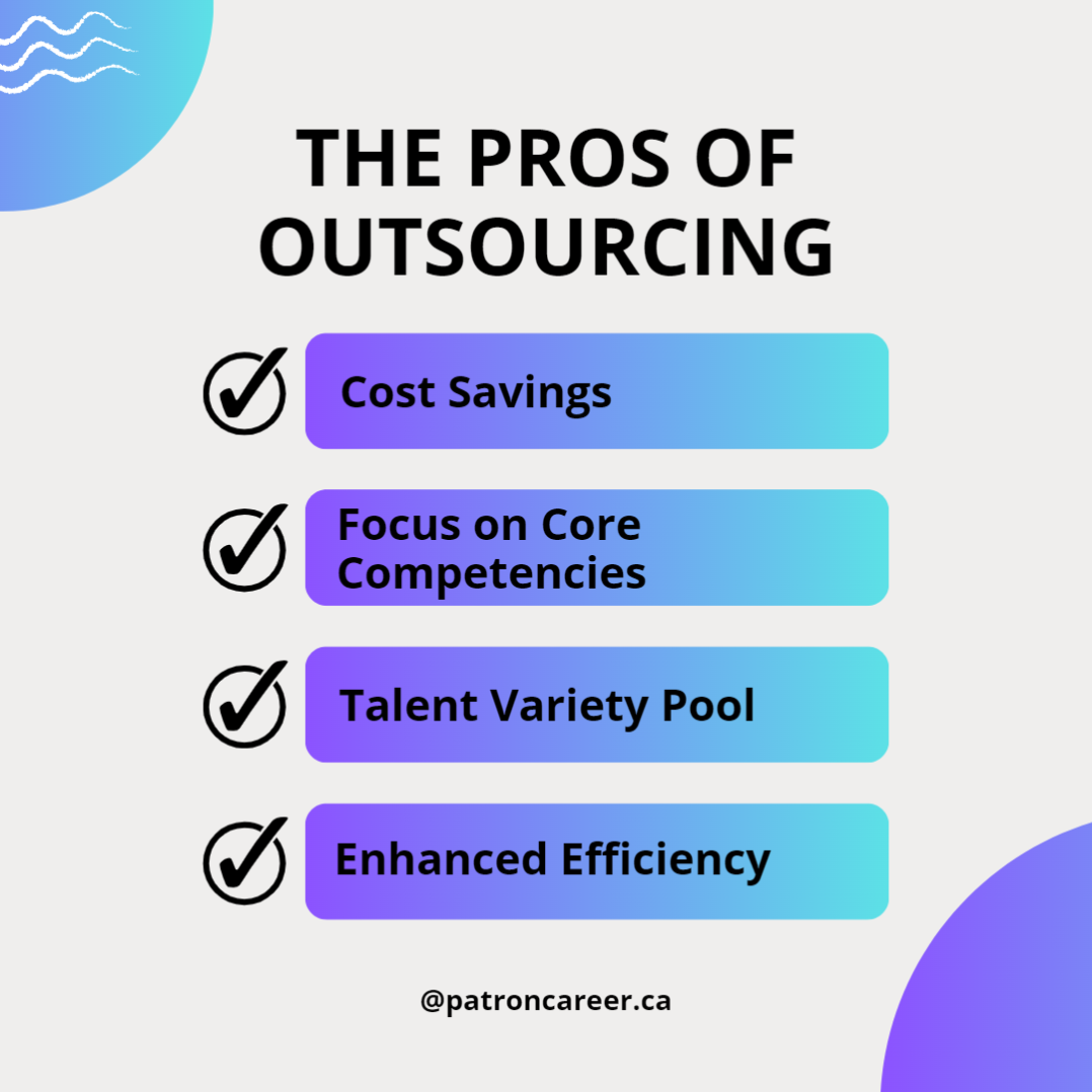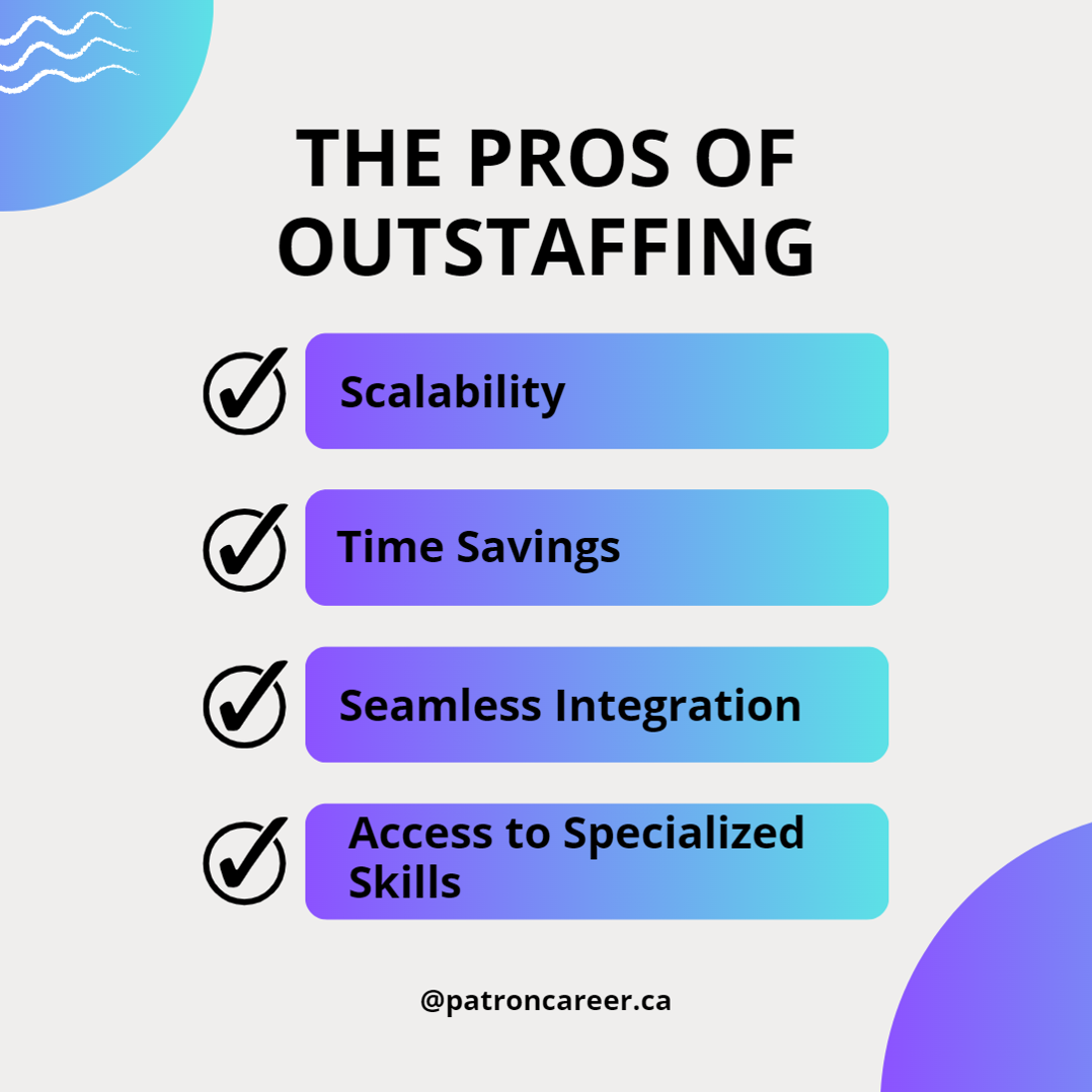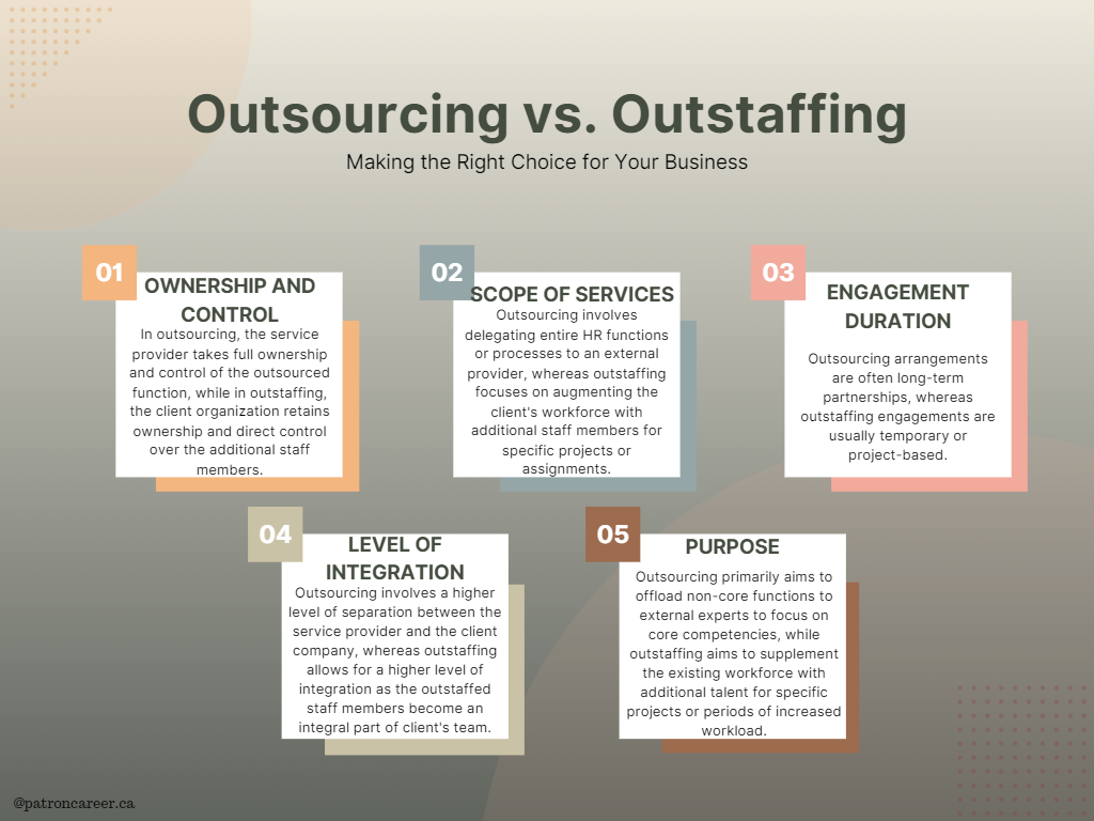
A Guide to the Hybrid Workplace
10 July, 2024
Patron Career Staffing firmly believes in adopting a tailored approach to meet temporary and permanent recruitment needs. We safeguard the interest of our clients by finding such workers who are knowledgeable and reliable.
About UsNeed help? Make a Call
32 Dundas Street East Unit A, L5A1W2

Running a business is quite difficult, let alone managing and retaining an in-house talent pool which sometimes costs the business way too much. There are times when internal business needs grow to an extent wherein remote talent is hired to fulfil those operational requirements. Outsourcing and outstaffing are the two widely adopted strategies to combat talent shortage and manage human resources effectively. Both business models offer distinct benefits and their common goal is to streamline a company’s HRM (Human Resource Management) process. In this article, we will delve into the key differences between outsourcing and outstaffing, their importance in human resources management, and the advantages they bring to organizations.
Also Read: The All-Encompassing Guide on Workplace Burnout
Defining Outsourcing
Outsourcing refers to the practice of contracting external service providers to handle specific HR functions or processes. These service providers are typically specialized firms or agencies that are experienced in delivering HR services. Outsourcing comes in handy for companies that delegate the completion of a project to another company. Without bothering the client company’s workforce team, the job is accomplished by another specialized company, after paying a certain amount for their services. Given below are some important aspects of outsourcing:

1. Focus on Core Competencies:
Outsourcing non-core HR functions allows organizations to focus their internal resources on strategic activities such as planning that align with their core competencies. Entrustment of routine HR tasks to external professionals can help businesses move forward and concentrate on vital operational functions and achieve greater efficiency.
2. Cost Savings:
An outsourcing model can help you save tremendous business costs. External service providers often operate on a large scale, with tons of projects at a given time, which allows them to leverage economies of scale and offer services at a lower cost than the in-house professionals. Outsourcing is quite beneficial for small and medium-sized enterprises (SMEs) with restricted budgets.
3. Access to Expertise:
HR outsourcing opens the door to a wider talent pool that may not be available within the organization. External providers are experienced in HR management processes, regulatory compliance, and the latest market trends. This expertise can enhance HR processes and contribute to better talent management, employee engagement, retention and overall organizational performance.
Understanding Outstaffing
Outstaffing, also known as staff augmentation, is a different approach to HR management. It involves partnering with a third-party agency to hire and manage additional staff members who work directly under the client's supervision. What we mean is, the client’s team and the extended team work together to accomplish the given objectives. In this collab, the in- house staff of your company may also manage the extended team. Here are some key points to understand about outstaffing:

1. Scalability and Flexibility:
Outstaffing offers organizations the ability to quickly scale their workforce based on fluctuating business needs. It allows for greater flexibility in managing temporary or project-based workloads, without the long-term commitment associated with permanent hires. This is particularly useful for businesses experiencing seasonal peaks or project-specific requirements.
2. Retaining Control and Integration:
Unlike traditional outsourcing, the outstaffing model allows companies to retain direct command over the hired staff members. They become an integral part of the client's team, working closely with internal employees and reporting directly to the organization's management. They are usually bound by your decisions and are obliged and answerable to you. This facilitates seamless collaboration, communication, and alignment with the company's culture and objectives.
3. Cost-Effectiveness:
Outstaffing offers a cost-effective solution for organizations requiring additional skilled resources without the expenses associated with hiring full-time employees . Clients can avoid recruitment costs, employee benefits , and other overhead expenses, while still benefitting from the required expertise and manpower.
Related: Talent Acquisition v. Talent Management
The Difference Between Outsourcing and Outstaffing
While both outsourcing and outstaffing involve external service providers, there are numerous differences between the two:

1. Ownership and Control:
In outsourcing, the service agency assumes responsibility for managing and delivering the outsourced HR functions. In contrast, outstaffing enables the client organization to maintain ownership and control over the hired staff, who work as an extension of their team.
2. Scope of Services:
Outsourcing typically involves delegating entire HR functions, such as payroll management, recruitment, or employee benefits administration, to the external service provider. Outstaffing, on the other hand, focuses on augmenting the client's workforce with additional personnel to work on specific projects or assignments.
3. Longevity of Engagement:
Outsourcing arrangements are often long-term or ongoing partnerships, as the service provider takes on the responsibility of managing the outsourced functions over an extended period. Outstaffing engagements, however, are usually temporary or project-based, lasting for the duration of the specific assignment.
Final thoughts
Both outsourcing and outstaffing offer valuable solutions for organizations seeking to enhance their human resources management. Outsourcing provides expertise, cost savings, and the ability to focus on core competencies while outstaffing offers scalability, flexibility, and seamless integration. Understanding the differences between these two models is vital in determining the most suitable strategy for a particular organizational context. By leveraging outsourcing or outstaffing effectively, businesses can enhance HR efficiency, improve productivity, and drive sustainable growth.
